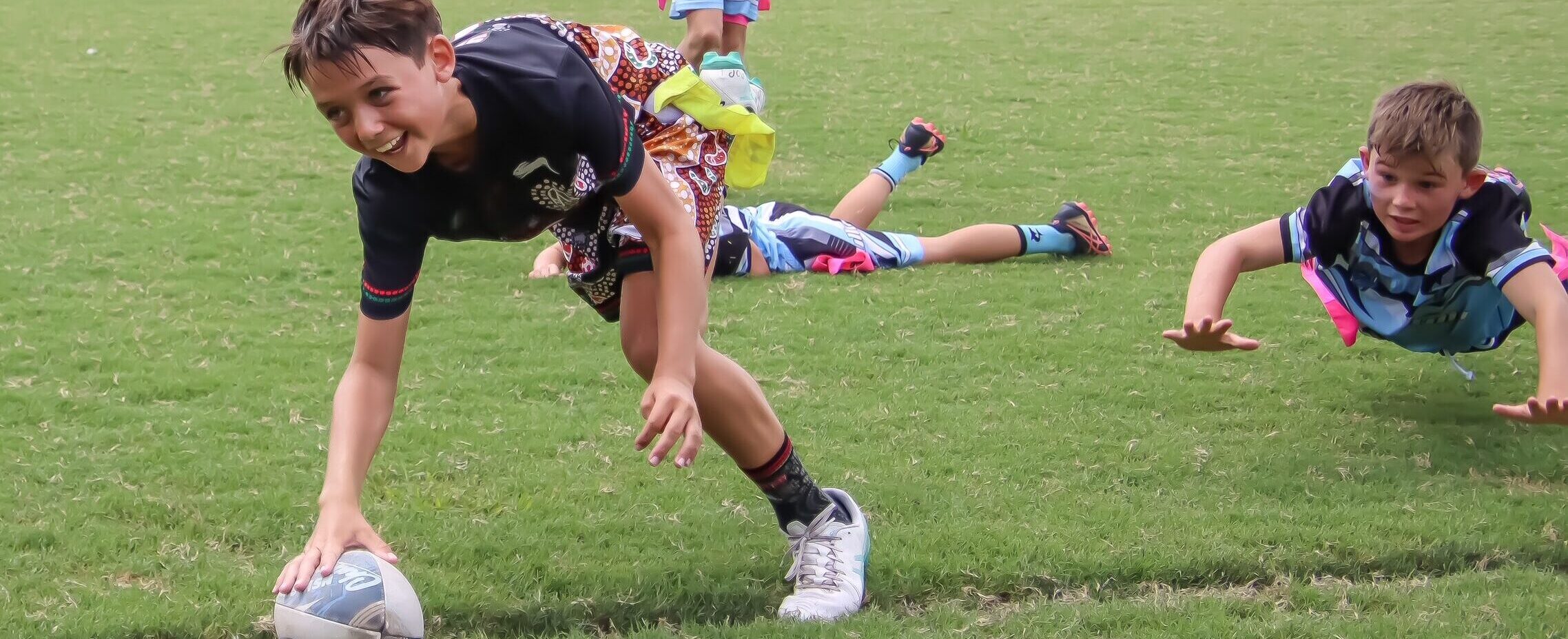Oztag Rules
The Basics
- Oztag is a non-tackling version of rugby league. Maximum of 8 players at any one time.
- Defender must remove one or both tags to stop attacker’s progress. He/She then holds up the tag and drops it to the ground marking where the play the ball should occur.
- There is a marker in the play the ball.
- Defence must be back seven metres.
- Defensive line can move forward only when dummy half touches the ball. Dummy half can run and be tagged with the ball.
- Six tags/plays to promote ball before changeover.
- An attacker must stop and play the ball if he is in possession with only one tag on.
- The only persons able to promote the ball with one tag on are the dummy half, and the player taking the tap (as long as they do not take more than one step with the ball.
- A knock back is play on, knock on advantage rule applies – same as league.
- An attacker must stop and play the ball if he is in possession with only one tag on.
- The only persons able to promote the ball with one tag on are the dummy half, and the player taking the tap (as long as they do not take more than one step with the ball.
- The game is non-contact the attacker cannot deliberately bump into defender. A defender cannot change direction and move into attacker’s path. Whoever initiates contact will be penalised. The onus is on the attacking player to avoid defender.
- The ball carrier is not allowed to protect his tag or fend off defenders.
- A try is awarded to the attacking team when they ground the ball on or over the try line.
- Simultaneous tag is play on. (If the referee is unable to decide, the pass is allowed – play on. The advantage goes to attacking team.)
- An attacker may pass the ball over his/her try-line to a team mate who may run the ball out. If the ball is dropped, the ball is deemed dead. A player in possession may run behind his try-line and back out into the field of play.
- Players can dive to score a try, however, if this player touches the ground with the knees or arms before the try line or slides across the line and a defender is within tagging distance a try is disallowed and a tag is counted.
- A player can go down on their knees to score a try over the try line.
Kicking
- A team may kick the ball before the initial tag is made. (e.g.: a team picks up the ball in general play from a kickoff, knock- on, loose ball etc.. may kick the ball before being tagged) Once a tag has been made, the ball may not be kicked again till after the fourth tag.
- Kicks in General play cannot be above the shoulder height of the referee. Attacking team cannot dive on a kicked ball in any situation, but can kick on.
- Kick offs and line drop outs. If the ball lands in the field of play and then rolls across the try line whether touched or not a line drop out occurs. Try line becomes the dead ball line for all kicks.
- If the ball is kicked or passed into the referee, the referee will order a changeover where he was struck.
Misconduct
- Unsportsmanlike conduct covers the behaviour and attitude of players on the field and may result in penalty, sin bin or dismissal.
- The Australian Oztag Sports Association has and will hand out lengthy penalties for fighting.
Click here to download the full official Oztag rule book.



